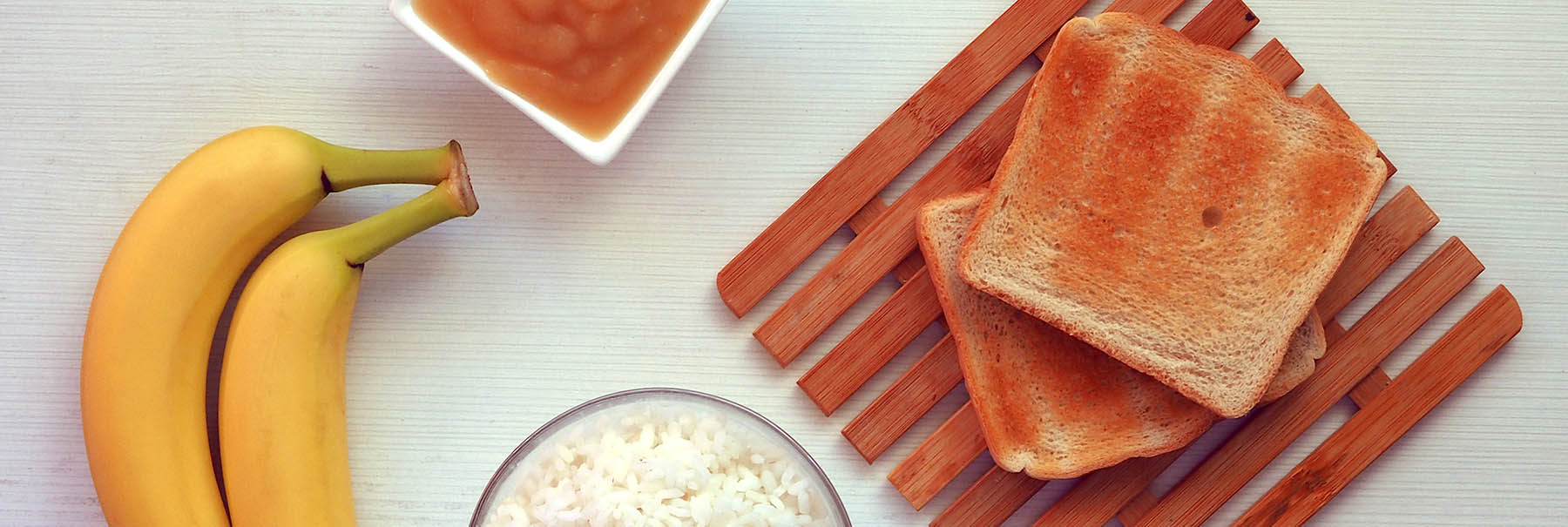Is the BRAT Diet Still the Best for Nausea?

If you’ve ever had young children with stomach illnesses — or been one of those children yourself — then you are likely familiar with the acronym “BRAT.” This is shorthand for bananas, rice, applesauce, and toast. Otherwise known as the bland, boring, and comforting foods that were traditionally considered the dietary staples of children with nausea, vomiting, or diarrhea.
A few theories circulated as to why the BRAT diet was beneficial. For example, doctors believed that these foods were easier for the stomach to digest, which can reduce nausea. Additionally, they believed the BRAT diet contributed to firmer stools.
The BRAT diet’s limitations
Despite decades of practice, however, modern medical research has not been as kind to the BRAT diet. This culminated in 2012 when the American Academy of Family Physicians published guidelines on the prevention and management of gastroenteritis in children. According to their research, this diet was too restrictive, and these foods should not be included unless they are already a part of a child’s regular diet. In addition, the focus should be placed primarily on preventing dehydration in these cases, not consuming the BRAT foods.
Nutrition expert weighs in
Veruska Gonzalez, M.S., R.D., a clinical dietitian with the University of Miami Health System, supports the academy’s findings. While following a bland diet and staying hydrated is a good idea for kids with stomach illness, she says that the BRAT foods are far from the only ones that fit the bill. When eaten exclusively, these foods limit the nutrients a child would receive from following a less restrictive diet. She suggests including foods such as boiled or grilled chicken breast, fruits, vegetables, and soups, just to name a few.
“The BRAT diet is a very restrictive diet that offers very little protein and healthy fats, which are important for growth in children,” says Gonzalez. “Research has also been scarce when it comes to confirming that the BRAT diet is the best for diarrhea and nausea. Considering this, it is usually more beneficial for patients to continue to follow a bland diet without as many restrictions.”
Tips for tummy troubles
Gonzalez adds that other strategies can help to manage or even prevent tummy trouble in kids. Ideally, the best tactic is warding off any digestive illnesses in kids by enforcing good hygiene, such as proper handwashing and not sharing food from each other’s plates.
However, if your child is already ill, proper hydration is most important for a parent to focus on. “One of the main concerns of experiencing diarrhea and/or vomiting is the possibility of becoming dehydrated,” she says. “It is crucial to maintain proper fluid intake by consuming liquids such as tea, electrolyte-rich fluids, bone broth, and water.”
Gonzalez says that some kids have shown improvement by eating several smaller meals throughout the day rather than three larger meals.
Finally, Gonzalez says monitoring your kid’s symptoms is essential to ensure it isn’t something more serious. If your standard diarrhea, nausea, or vomiting becomes more severe, long-lasting or includes any of the following symptoms, talk to your health care provider:
- Belly pain
- Blood in the stool
- Frequent vomiting
- Refusal to drink liquid
- High fever
- Dry, sticky mouth
- Weight loss
- Urinates less frequently (wets fewer than six diapers per day)
- Frequent diarrhea (lasting more than two days)
- Extreme thirst
- No tears when crying
- Sunken soft spot (fontanelle)
Wyatt Myers is a contributor for UHealth’s news service.
Tags: BRAT diet, diarrhea, gastroenteritis, nausea, Pediatrics, Veruska Gonzalez, vomiting
